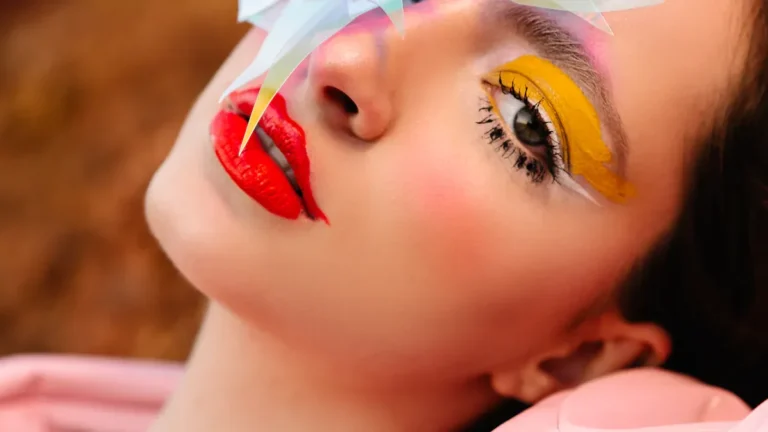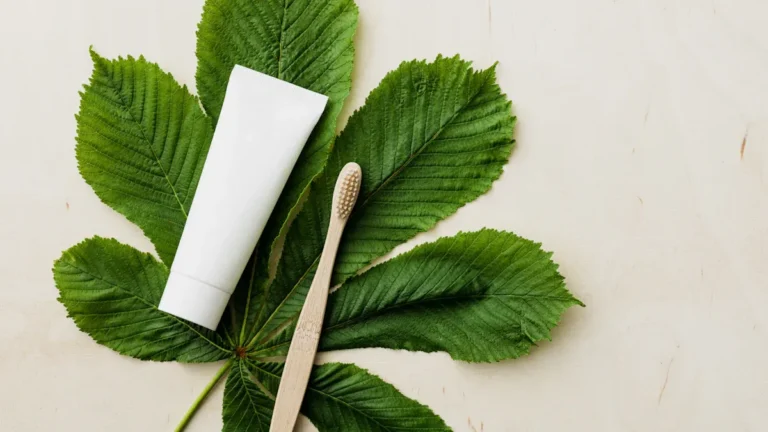What Are PCR Cosmetic Tubes and Why Do They Matter for Sustainability
You can pick pcr cosmetic tubes to help the earth and use better packaging. PCR means post-consumer recycled material. This green choice uses plastic from things people already used. When you choose pcr, you need less new packaging. You also cut down on plastic trash. This makes packaging better for the planet. Brands like Xinfly Packaging use these tubes to help nature.
Key Takeaways
- Picking PCR cosmetic tubes helps cut down plastic trash. These tubes use recycled stuff, so less new plastic is needed.
- PCR packaging can be recycled every time. You can recycle these tubes again and again. This helps keep Earth clean.
- Using PCR tubes uses less energy and makes less pollution. This makes your packaging choice better for nature.
PCR Cosmetic Tubes Overview

What Is PCR Plastic
You might wonder what PCR plastic is in cosmetics. PCR means post-consumer recycled plastic. This plastic comes from things people already used, like water bottles or shampoo bottles. Companies collect these plastics, clean them, and make new packaging from them.
- PCR comes from recycled plastics.
- It is mostly made from PET and HDPE.
- It helps make eco-friendly packaging for cosmetics.
PCR plastic is important for green packaging. When you pick pcr cosmetic tubes, you use less new plastic. This helps keep plastic out of landfills and helps nature. PCR packaging also fits the idea of a circular economy, where things get reused instead of thrown away. Many brands use pcr packaging because it is 100% recyclable and better for the earth.
How PCR Cosmetic Tubes Are Made
You may want to know how pcr cosmetic tubes are made. The process starts by collecting used plastic tubes and containers. Workers sort and clean the plastics. Factories turn the clean plastic into small pellets called resin. This resin is used to make new pcr packaging.
Here is a simple table that shows the main steps in making pcr cosmetic tubes:
| Step | Description |
|---|---|
| Extrusion | Melt the pcr plastic and shape it into a tube. |
| Cutting | Cut the tube into the right size for each product. |
| Heading | Attach the tube head using special molds. |
| Decorating | Print designs and logos on the tube to make it look nice. |
| Labeling | Add brand names and details with silkscreen printing. |
| Capping | Put on a strong cap to protect the product and finish the tube. |
Some top companies can make tubes with up to 95% PCR. Others, like Albéa, try to use more pcr plastic every year. You can find pcr cosmetic tubes that are 100% recyclable, so you can recycle them many times without losing quality.
When you use pcr packaging, you help keep plastic out of landfills. This saves natural resources and means we need less new plastic. PCR plastic also takes less energy to make, so it creates less pollution. By picking pcr cosmetic tubes, you help the earth and make the cosmetics industry greener.
Tip: PCR cosmetic tubes are good for the planet and meet the need for eco and recyclable packaging in beauty.
The market for pcr packaging is growing quickly. Experts think it will grow by 9.12% from 2025 to 2030. This means more brands and people want green and 100% recyclable choices. PCR cosmetic tubes are special because they use recycled plastic, can be recycled again, and help the earth.
Sustainable Packaging Benefits

Environmental Impact of PCR Cosmetic Tubes
When you pick pcr cosmetic tubes, you help nature. These tubes use pcr plastic from recycled items. This means less new plastic is needed. More plastic waste stays out of landfills. Choosing green packaging helps keep the planet clean.
Here is a table that shows how pcr cosmetic tubes compare to regular plastic tubes:
| Aspect | PCR Tubes | Conventional Plastic Tubes |
|---|---|---|
| Landfill Accumulation | Much less because of recycling | High, adds to trash |
| Demand for Virgin Plastics | Lower since old materials get reused | High, needs new plastic |
| Carbon Footprint | Smaller because it uses less energy | Bigger because making new plastic uses more |
| Support for Circular Economy | Helps reuse and recycle | Does not help recycling |
You can see pcr packaging makes less trash and needs less new plastic. This protects nature and helps recycling. Many brands now use eco friendly packaging because people want better choices.
You might see special labels on pcr cosmetic tubes. These include:
- U.S. Plastics Pact: This group asks brands to use certified pcr and share where it comes from.
- APR PCR Certification: This check makes sure the recycled plastic is really from used items.
These labels help you know your packaging is truly green and can be recycled.
Resource Conservation and Circular Economy
Using pcr plastic in packaging saves important resources. Making pcr cosmetic tubes uses less energy and water than making new ones. This helps save water and lowers energy use.
- Using pcr plastic means less new plastic is needed, so energy is saved.
- Making pcr uses less water, which helps protect water supplies.
- Less energy is needed for cleaning water, so more resources are saved.
Pcr packaging keeps recycled plastic in use. This helps a circular economy, where things get reused instead of thrown away. Picking 100% recyclable and eco friendly packaging helps stop plastic waste.
A circular economy tries to:
- Make less trash and use resources well.
- Move away from the old way of making and throwing away.
- Use recycled plastic instead of new plastic.
- Help brands make green pcr packaging.
You help this system when you pick green packaging. Brands that use pcr show they care about nature and give you better choices.
Reducing Carbon Footprint with PCR
You can lower your carbon footprint by choosing pcr cosmetic tubes. Making pcr plastic uses much less energy than making new plastic. This means fewer greenhouse gases go into the air.
Here is a chart that shows how much energy and emissions you save with pcr packaging:

- PET: 79% less energy, 67% fewer emissions
- HDPE: 88% less energy, 71% fewer emissions
- PP: 88% less energy, 71% fewer emissions
Using pcr packaging helps cut down on fossil fuels. This makes your packaging greener and better for nature. You also help use 100% recyclable materials that can be used again.
Recyclability is very important for green packaging. Good pcr plastic can be recycled many times. This keeps materials in use and helps the cosmetics industry stay eco friendly. Sometimes recycling is hard if tubes are dirty or if centers do not have the right tools. Still, picking recyclable pcr packaging is one of the best ways to help the planet.
Tip: Look for pcr cosmetic tubes with clear eco labels and certifications. This helps you know your packaging is really green and helps the earth.
Limitations and Comparisons
Challenges of PCR Cosmetic Tubes
PCR cosmetic tubes have some problems. Factories face tough rules when using pcr plastic. They need to test recycled materials for safety. Checks make sure there are no bad chemicals. Sometimes, pcr packaging cannot use all pcr plastic. It can break easily if too much is used. The color of pcr plastic may look dull or change. This makes it hard to get bright packaging. Some recycled plastics keep smells. Companies must pick odor-free types. Printing on pcr packaging is hard. The surface does not always hold ink well. Brands must follow strict safety rules. Chemicals can move from the tube to your product. This risk is higher with pcr plastic than new plastic. The cosmetic industry does not have clear safety rules for pcr packaging. This can slow down how fast it is used.
PCR vs Other Sustainable Packaging Options
You have many choices for green packaging. PCR packaging uses less new plastic and energy. Biodegradable packaging breaks down by itself. It is better for nature if you throw it away the right way. Here is a table to help you compare:
| Feature | PCR Packaging | Biodegradable Packaging |
|---|---|---|
| Uses recycled plastic | Yes | No |
| 100% recyclable | Yes | Sometimes |
| Needs special disposal | No | Yes |
| Keeps plastic waste low | Yes | Yes |
Most people want eco and recyclable packaging. Studies show 71% of shoppers look for green choices. Many will pay more for pcr packaging. Brands like Lush and MAC use refillable and recyclable packaging. The market is moving to recyclable, refillable, and compostable options. You help nature by picking pcr tubes and other green packaging.
When you pick PCR cosmetic tubes, you help the future. These tubes are 100% recyclable and protect nature. They also keep packaging eco friendly. PCR plastic makes less waste and uses less energy. You can choose recyclable tubes for your products. You can also work with suppliers like Xinfly Packaging for green packaging.
FAQ
What does PCR stand for in cosmetic packaging?
PCR stands for post-consumer recycled. You see this label when brands use recycled plastic from items people already used, like bottles or containers.
Can you recycle PCR cosmetic tubes again?
Yes, you can recycle most PCR cosmetic tubes. Always check the recycling symbol on the tube. Clean the tube before you put it in the recycling bin.
Do PCR cosmetic tubes look different from regular tubes?
PCR tubes may look less shiny or have a slight color change. You still get strong, safe packaging for your products.






